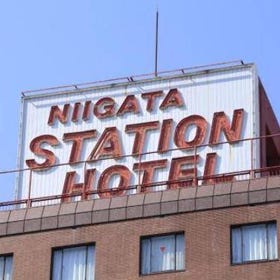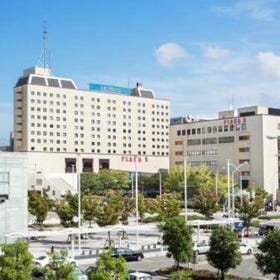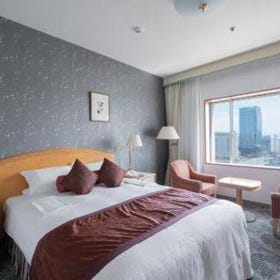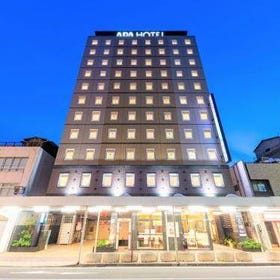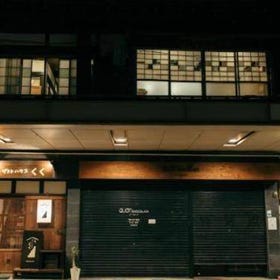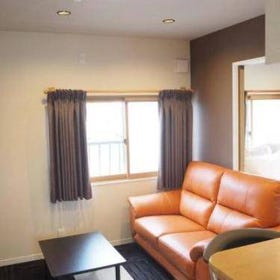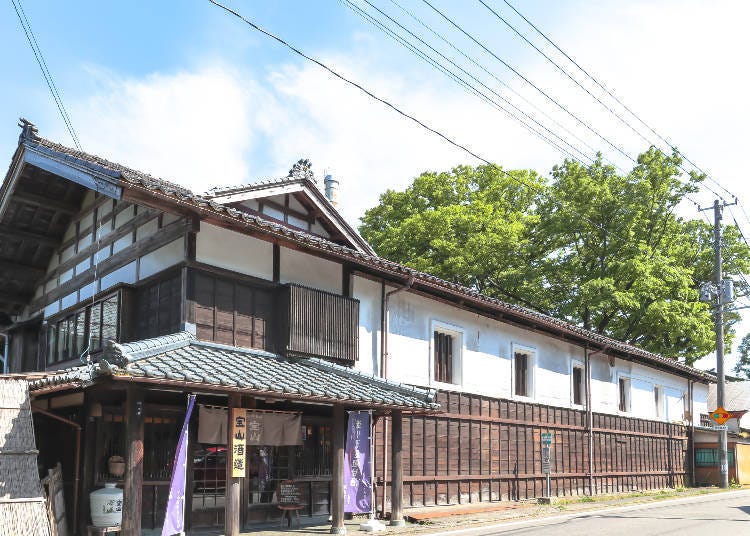
Niigata City is the capital of Niigata Prefecture, the fifth largest prefecture in Japan. It is one of the few remaining hubs of geisha culture and a renowned gourmet paradise.
To help travelers find where to stay in Niigata City, we've created this comprehensive guide outlining accommodation, neighborhoods, transport, and more, ensuring you find the right match for your own travel style!
Main photo: PIXTA
1. Getting to and from Niigata City

Niigata is a mid-sized city of around 800,000 on the mouth of the Shinano River and the Sea of Japan coastline. The center is flashy and modern, while the outer suburbs are characterized by rural, tranquil farmland.
Being very spread out, public transport in Niigata City is limited. Fortunately, many of the central attractions are walkable, and Niigata Station, which is directly connected to Tokyo Station via bullet train, is smack-dab in the middle of the action.
a. Getting to Niigata City from Tokyo
Niigata City is a direct line from Tokyo via the Joetsu Shinkansen (around 2 hours; covered under the Japan Rail Pass and JR East Nagano-Niigata Area Pass).
b. Getting to Niigata City from Niigata Airport
Niigata Airport is quite distant from central Niigata City, and there are no train stations nearby. Those arriving at the airport can reach Niigata Station via public bus, which takes about 25 minutes on the limited express and 33 minutes on the regular service, both costing 420 yen. The bus timetable can be viewed in English here. There is not much to do around Niigata Airport, so booking accommodation nearby is not recommended for sightseers.
c. Ease of getting to sightseeing spots outside Niigata
Niigata Station is the final stop on the Joetsu Shinkansen bullet train, which departs from Tokyo Station and arrives at Niigata City in around two hours. There are several stops along the way worth checking out, including Takasaki in Gunma Prefecture, famous for spiritual wilderness like Lake Haruna, and Echigo-Yuzawa Station, one of Japan's most convenient ski resort towns. From Niigata Station are several local train lines and express services that will take you all over Niigata Prefecture, along with nearby prefectures like Yamagata and Akita.
d. Getting around Niigata City
The central "Chuo Ward" of Niigata City is best navigated on foot or rental bicycle. Many of the main attractions, such as the geisha district of Furumachi, the banks of the Shinano River, and Hakusan Shrine, are able to be reached without transportation from Niigata Station, and are easily tourable in a day.
While some spots in the suburbs are accessible by train, like the Niigata Rice Cracker Museum, many require researching complex bus timetables and routes. If you plan on visiting several spots in the suburbs or beyond, renting a car is the most hassle-free way to get around.
2. What is Niigata City like?
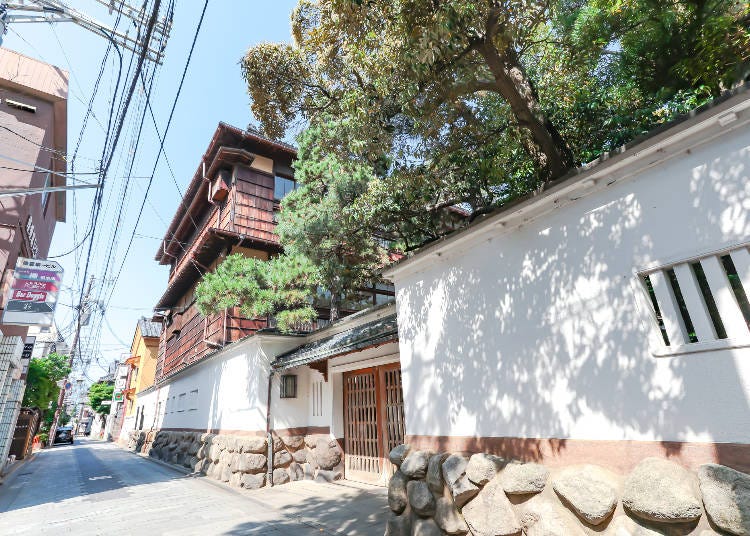
Split between the Shinano River, the longest river in Japan, Niigata City is a seamless blend of both traditional and modern characters.
Around Niigata Station are high-rise buildings and department stores offering the latest Japanese and international shopping trends, while across the Shinano River is the old-school Furumachi district, whose unique style is born from the Meiji, Taisho, and Showa eras.
While now a small-scale city, Niigata was once one of Japan's largest and most prosperous bastions of entertainment and commerce. Being one of the five ports opened for international trade in 1858 and a stop on the Kitamaebune trading route connecting Hokkaido and Osaka, Niigata's economy proliferated, powering a lively nightlife scene to entertain all who visited.
Today, traces of this former glory remain amongst the cobblestone alleyways of Furumachi, with an ancient restaurant, teahouse, or residence lying upon virtually every corner.

a. What's nearby Niigata City?
Niigata City is surrounded by vast, flat farmland supplying Japan with fresh produce. The best time to view this idyllic scenery is in May, when the rice paddies are flooded to begin planting, forming an endless sea of mirrors that will take your breath away, particularly during sunset.
There's also excellent day-trip potential from Niigata City, including spots like the sacred mountainside village of Yahiko and the hot spring towns of Tsukioka Onsen and Iwamuro Onsen, the latter said to be where Niigata geisha culture originated.
Also easily accessible by train is the northern city of Murakami, Japan's salmon capital, famed for surreal scenes of salmon hanging to dry both inside and outside streets and shops.
3. Where is the best place to stay in Niigata City?
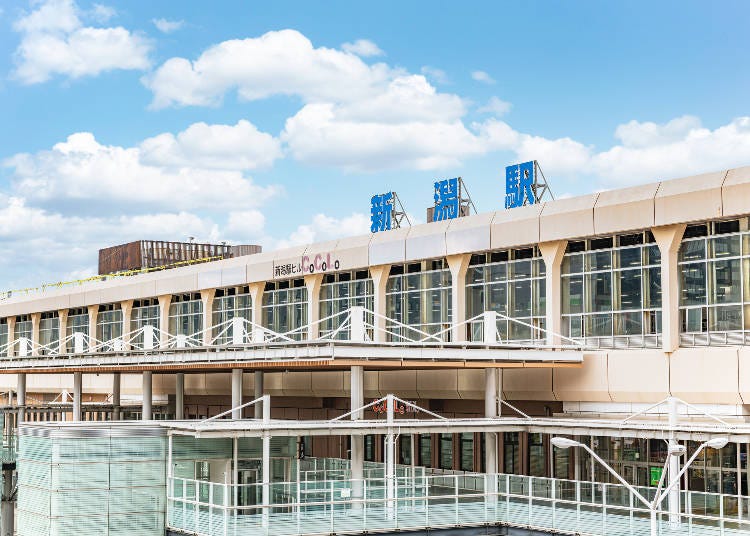
a. Near Niigata Station
We suggest staying near Niigata Station for those making several day trips from Niigata City. While typical of a standard Japanese city, it provides all the benefits of urban life, such as ample public transportation and restaurants serving local cuisine. Accommodation is plentiful, so you shouldn't have any trouble finding a room outside of busy periods (outlined later in the article).
i. Why Stay Here?
With many hotels just a stone's throw away, Niigata Station is the perfect base for trips across the city and prefecture. There are dozens of accommodation choices to peruse, from budget-friendly to luxury, along with a concentration of restaurants, bars, stores, and more. Also, if you're planning on visiting Sado Island, the Sado Kisen Ferry Terminal is a 20-minute walk from Niigata Station.
ii. Access
The dual business and entertainment districts of Bandai and Ekinan are right by Niigata Station, and all accommodation within is walkable.
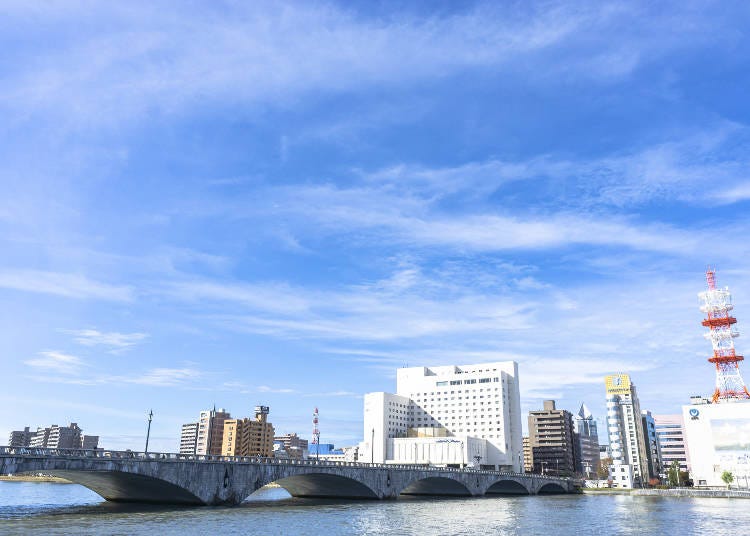
iii. Type of Neighborhood/Atmosphere
The surroundings of Niigata Station consist of high-rise buildings, department stores, and hotels. The Bandai side has a late-night, party vibe with plenty of bars and nightclubs, making it suitable for young travelers. The Ekinan side is significantly quieter and more residential, making it better for families. However, it also has the swanky Keyaki-dori Street, which hosts a diverse collection of restaurants with stellar cuisine.

iv. Popular Spots and Points of Interest
Being the commercial heart of Niigata, there isn't much cultural or historical sightseeing to do around Niigata Station. However, for night owls, the colorful streets of Bandai are awash with trendy establishments running until morning. While more low-key, there's also plenty to eat and drink on the Ekinan side too, making it popular with gourmands.
Highlights in and around Niigata Station include Ponshukan, a multi-facility shopping facility spread out over the south side of Niigata Station stocking the best local produce, craftsmanship, and, most famously, sake. The Sake Tasting Room features 100 varieties of regional brew, from which you can enjoy five servings for 500 yen.
Fans of Japanese seafood should make a beeline for Pier Bandai, a sprawling open market offering up ocean bounties fresh from the Sea of Japan, just a 20-minute walk from Niigata Station.
Otaku will have a field day at the Niigata Manga Animation Museum, which displays works by famous Niigata creators like Rumiko Takahashi, the genius behind hits like Urusei Yatsura, Ranma ½, and Inuyasha.
For shopping, head to the LoveLa Bandai shopping mall or the neighboring Niigata Isetan. Niigata Station is also a brisk 15-minute walk to the scenic embankments of the Shinano River, and a 25-minute walk to the historic district of Furumachi.
Recommended hotels near Niigata Station

b. Furumachi
Crossing the Shinano River over the solemn Bandai Bridge will take you to Furumachi, Niigata's offbeat, old-school downtown. The northern neighborhoods of Furumachi are the most traditional, lined by wooden "nagaya" rowhouses containing ancient restaurants, teahouses, residences, and more. Walking southwest towards Hakusan Shrine, the jewel of Niigata City, small alleyways yield to large Showa Era shopping arcades, before winding up at the hip and trendy Kamifurumachi, famous for its vibrant vintage clothing scene.
i. Why Stay Here?
While a little distant from Niigata Station, Furumachi is where the true soul of Niigata City lies. Its trove of cultural treasures, both modern and traditional, can only be absorbed by spending a few nights deep within its heart. Furumachi contains many of Niigata City's most notable tourist attractions, and is close to both the Sea of Japan coastline and beaches, along with the Shinano riverside.
ii. Access
Furumachi stretches for over 3 kilometers, and the amount of time it takes to walk to your accommodation will depend upon its location. However, 20-30 minutes on foot from Niigata Station will take you almost anywhere in Furumachi, so don't fret about great distances. Alternatively, you can also take a 5-minute train ride on the JR Echigo Line from Niigata Station to Hakusan Station, which will put you mere minutes from Hakusan Park. However, Niigata Station is actually closer to the traditional northern ends of Furumachi than Hakusan Station, so walking may be the better option.
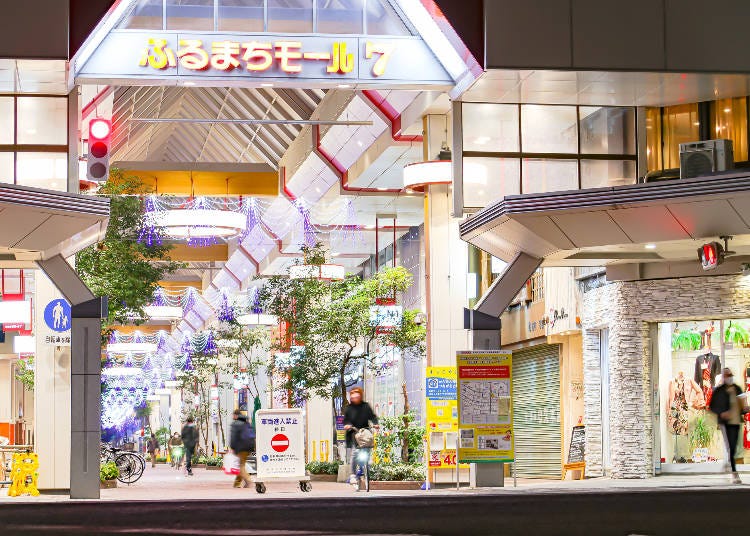
iii. Type of Neighborhood/Atmosphere
Furumachi is a vibrant mix of old and new, with a tangle of streets inviting travelers to venture off the tourist trail to uncover hidden gems. Many neighborhoods have a rustic, downtrodden feel, and dozens of gorgeous properties have sadly been abandoned and left to rot. During the day, the streets are filled with grandmothers socializing at the open-markets, while the night gives way to rowdy office workers drinking with colleagues. Despite its ancient heritage, much of Furumachi is surprisingly built up, and there are plenty of modern facilities and hotels. However, space is limited, and shopping, eating, and drinking is largely done at hidden, hole-in-the-wall joints, rather than the large-scale, highly-accessible mega-malls around Niigata Station.
In addition, while perfectly safe, many of the main streets of northern Furumachi are red light districts, projecting a seedy vibe unsuitable for children. Do your research carefully before settling on a hotel.
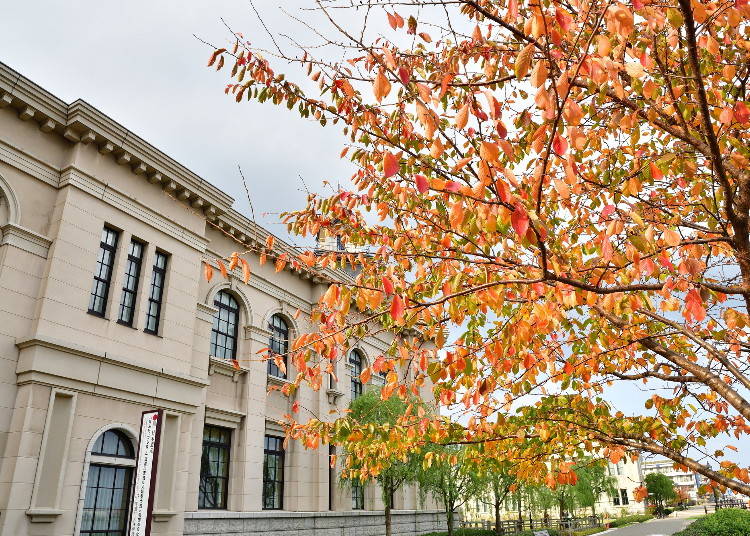
iv. Popular Spots and Points of Interest
Virtually every lane of Furumachi hides a historic temple, shrine, business, residence, or park, making it by far the most intriguing district of Niigata City. One of its most famous icons is Hakusan Shrine, whose spacious, leafy grounds offer plenty of space to unwind, explore, and discover local history.
Another landmark is Nabejaya Street, home to a collection of high-class, historical establishments like the geigi (Niigata term for geisha) restaurant Nabejaya Korin, and the pufferfish restaurant Kakimasa. Local geigi culture can also be encountered at the nearby Ryuto Geigi Café, where guests can relish tea and confectionery served by authentic geigi girls. Nearby is Saito Villa, a stunningly preserved traditional estate renowned for its lush gardens, peaking during the fiery foliage of autumn. One final must-see is Minatopia, a grand Western palace-like building now home to the Niigata City History Museum. Also on the grounds is the Former Niigata Customs House, built in 1869, and the Former Daishi Bank Sumiyoshi-cho Branch, built in 1927.
Recommended hotels in Furumachi
4. Types of accommodation in Niigata
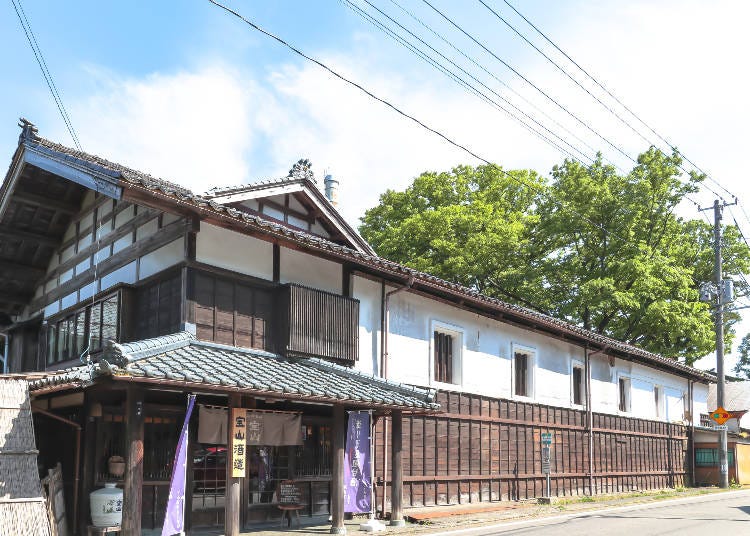
a. Ryokan
・Ryokan are traditional inns ubiquitous throughout Japan. They project the pinnacle of Japanese aesthetics, from "tatami" straw mat flooring to "onsen" hot springs, "kaiseki" cuisine, traditional gardens, and more. While some are in the midst of cities, ryokan tend to be concentrated around small hot spring towns, and many of the most esteemed ryokan around Niigata City are found in Tsukioka Onsen and Iwamuro Onsen, both a 40-minute drive from Niigata Station.
b. Business hotels
・Business hotels offer a no-frills, economical stay right in the heart of cities. Rooms are compact, yet comfortable and stocked with necessary amenities. As they are frequented by working professionals, they may not be the best choice for families, particularly those with young children. However, non-business, regular travelers are more than welcome. There are many business hotels around Niigata Station and Furumachi offering all kinds of plans.
c. Standard hotels
e. Guesthouses & hostels
・Guesthouses combine the simplicity of the capsule hotel with the warmth and friendliness of a local hostel. For solo travelers, they are a fantastic place to meet and mingle with fellow visitors, making city adventures more exciting! They are often run by locals, who will offer valuable advice to make the most of their neighborhoods. As noise and privacy can be an issue, guesthouses are generally suited towards young, solo travelers, although many guesthouses in Niigata welcome all kinds of visitors, including couples and families.
f. Vacation Rentals
・Vacation rentals offer up an entire facility, often equipped with kitchens, laundries, and balconies. If you're planning an extended stay in Niigata City, vacation rentals will make your time more private, homely, and relaxing. Unfortunately, this accommodation style hasn't yet taken off in Japan as it has across the globe, and options are limited in Niigata City.
5. When is the peak season for visiting Niigata?
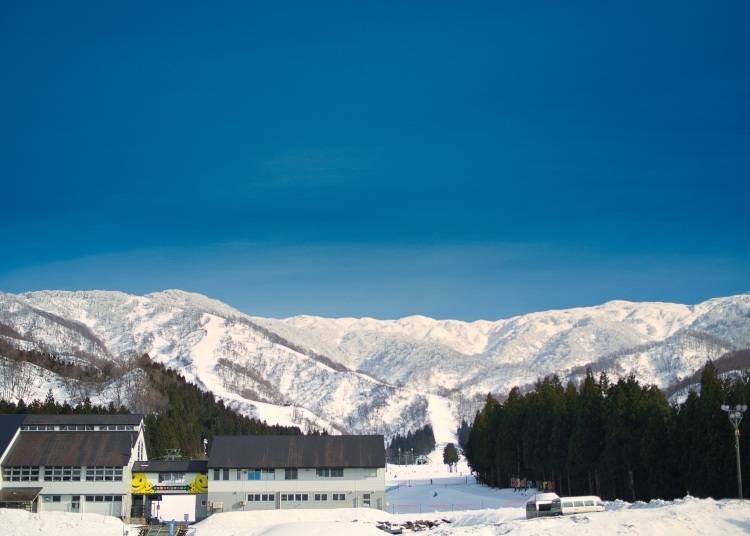
While not as packed as typical tourist cities like Tokyo, Kyoto, and Osaka, Niigata City still has its fair share of visitors, making it important to plan your dates accordingly.
・Winter Months
Many people, both Japanese and foreign, flock to Niigata in winter for its top-tier ski resorts. Many of these resorts are nestled deep in the mountains, most famously the Yuzawa and Myoko areas, and will often be busy during weekends and public holidays. However, as Niigata City sits on a vast plain, there are no ski resorts nearby, so winter traffic has little effect on the city. If you wish to ski while staying in Niigata City, the closest resort is the Ninox Snow Park in Shibata City, which is accessible in 50 minutes by car.
・Sake no Jin
Sake no Jin is a massive sake festival held in Niigata City over a weekend in mid-March. With the largest number of sake breweries in Japan, it's no surprise that Niigata City plays host to one of the world's biggest celebrations of this beloved brew, and over 100,000 people flock to the city to participate. Hotels and restaurants are often booked out, so if you're not a sake fan, it's best to avoid visiting.
・Summer Festivals
The "Niigata Matsuri," an annual summertime festival started in 1955, takes place on the first Friday, Saturday, and Sunday of August. There are lots of events and processions over the weekend, including a fireworks finale, and the streets are flooded with festival goers.
However, when it comes to fireworks, the Nagaoka Fireworks Festival steals the show. Considered one of the three best fireworks shows in Japan, this explosive celebration sees 20,000 fireworks launched over the 2nd and 3rd of August. As Nagaoka is booked out during this time, many instead opt to stay in Niigata City, which is reachable in just 20 minutes via bullet train.
Finally, mid-September hosts the Niigata Soh-Odori, a large-scale outdoor dance festival taking over the streets and bridges of Niigata City. While worth seeing, getting around during this festival is very difficult, so be warned.
6. Where to search if Niigata is booked
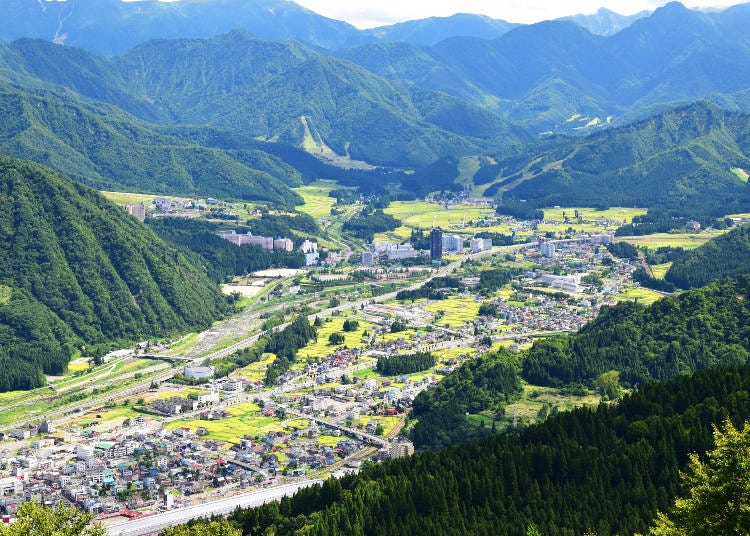
If you're struggling to find accommodation in Niigata City, there are several nearby cities and towns directly connected via the Joetsu Shinkansen bullet train, offering quick and easy access to Niigata City and beyond.
・Nagaoka
Nagaoka is a small city with all the conveniences and excitement of urban life, minus the crowds. It has plenty of its own charm to draw in visitors, such as the cherry blossoms of Yukyuzan Park, the Niigata Prefectural Museum of History, and the ancient brewing town of Settaya. Foodies will also be able to chow down on top-tier local catches from the Sea of Japan at the Teradomari Street Market. Nagaoka Station is 20 minutes from Niigata Station on the Joetsu Shinkansen bullet train.
・Tsubame Sanjo
Tsubame Sanjo is a renowned metalworking town manufacturing a staggering range of top-quality Japanese knives, teapots, cutlery, cups, and more. Along with shopping, many local factories, workshops, and forges welcome visitors with open tours, allowing this time-honored craftsmanship to be appreciated up close. Tsubame Sanjo Station is 12 minutes from Niigata Station on the Joetsu Shinkansen bullet train.
・Yuzawa area
Yuzawa is one of Niigata's foremost skiing regions, boasting a whopping 12 resorts in the area. This includes the renowned GALA Yuzawa Snow Resort, which has its own bullet train station, and the skiing-only private fields of the luxury NASPA New Otani hotel. There's also plenty of onsen hot springs and hiking courses to explore, allowing visitors to fully relish Niigata's rich natural splendor, along with the iconic Tunnel of Light (Kiyotsu Gorge Tunnel). Echigo-Yuzawa Station is 45 minutes from Niigata Station on the Joetsu Shinkansen bullet train.
- Area
- Category
*Prices and options mentioned are subject to change.
*Unless stated otherwise, all prices include tax.
Popular Tours & Activitiess
Recommended places for you
-

Sendai Tanabata Festival
Japanese Festivals (Matsuri)
Sendai And Matsushima
-

Nikka Whisky Sendai Distillery
Culture Experience
Sendai And Matsushima
-

Koiwai Farm
Other Nature
Morioka, Hiraizumi And Hachimantai
-

Ginzan Onsen
Hot Springs (Onsen) & Bath Houses (Sento)
Surrounding Areas Of Yamagata
-

Matsushima Bay
Landscapes
Sendai And Matsushima
-
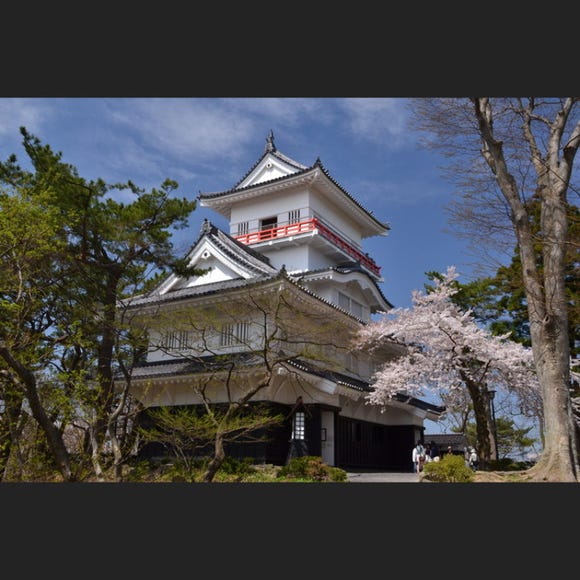
Senshu Park
Parks
Surrounding Areas Of Akita
-
Ad

Meet GU, UNIQLO’s Stylish Sister Brand! Fashion-Forward Clothing in the Latest Colors (Featuring Exclusive Coupon)
-
Ad

Advice from the Experts at Hitohira: Here's How to Choose the Best Japanese Knife
-
Ad

Why Fukushima is the Next Big Food Destination in Japan The Foodie Paradise Only 90 Minutes from Tokyo
-

Disney Meets Shinkansen: Two Themed Trains to Explore Japan's North and South in 2025
-

Smart Ways to Avoid Crowds and Enjoy a Safe, Comfortable Trip to Myoko, Niigata Prefecture.
-

Dining in Yamagata: Must-Try Foods & Top Restaurants Near the Station
by: ShiroKu inc.
-

Sumikawa Snow Park: Skiing in Northern Japan's Breathtaking Backcountry
-

The Best of Japan: 11 Major Cities Every Traveler Should Visit
-

New Japanese ‘Super Hotel’ Arrives in Sendai to Revitalize Local Area
-

Healthcare in Japan for Tourists: What to Do When You Get Sick or Injured in Japan
-

Where To Stay in Aomori: Best Areas & Hotels for Visitors to Japan's North
by: Lucio Maurizi
-

Aomori Nebuta Festival Accommodation: 14 Best Hotels Near the Parade Route (June 2025 Update)















